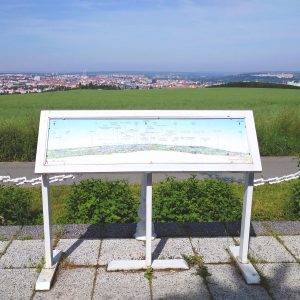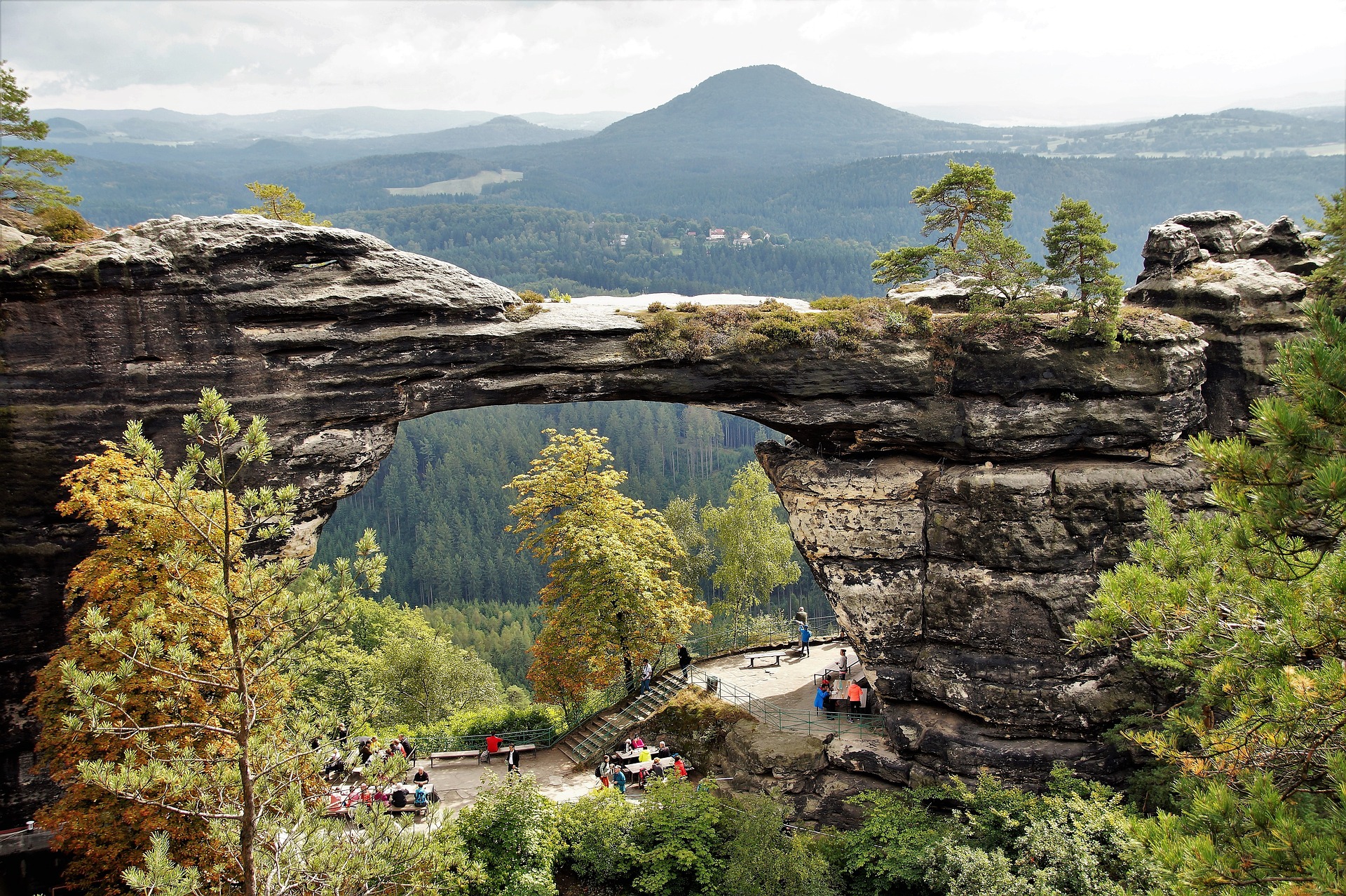
The attractive feeling of being foreign often tempts us to travel far away, but perhaps what we desire is within our reach.
In the north-west of Bohemia there is a small region called the Czech and sometimes Czech-Saxon Switzerland. It’s a huge rock massif cut by wind and rain into remarkable formations. From Germany it spills over into Bohemia, and right where the rocks are highest and sharpest, the forest densest and most impenetrable, that is where the border is. In short, you can’t cross the border here, even smugglers have never crossed the border here. You can only cross the border by taking a long detour around the Elbe River.
Part One – Mezní Louka (Meadow)
Mezní Louka (Meadow) is really a meadow. Literally. There are two bus stops, two hotels and a camp. The camp belongs to one of the hotels. The showers are, must said, luxurious. What’s missing is a kitchen. There are five sinks, but that’s it. Not even an outlet. I mean, there is one in the bathroom, but it’s only for razors. Make sure to bring the stove with you!
Through Pravčická brána and Soutěsky (Gully)
Pravčická brána is certainly the most famous natural formation in the whole area. Directly from the camp a path (red tourist sign) leads into the rocks. All you can feel is the sand crunching under your boots, occasionally you rub against a rock and on the other side – there is only a steep cliff in places. Then the landscape opens and you see a huge gate. Due to its popularity, this beauty is charged, but it really is worth it. Weird stairs and footbridges take you to several viewpoints, where you can get a bird’s eye view of the whole area around the forests from which the rocks jut out.
We will descend to the lowest-lying village in the Czech Republic called Hřensko. However, the atmosphere of typical hotels from the early days of tourism, cut into the rocks in a narrow valley, is spoiled by the appearance of the border towns – large markets full of trinkets, plaster gnomes of all sizes and an incredible number of cartons of cigarettes. There is, however, an inconspicuous entrance to the gully – a narrow gap between the rocks where a deep river runs. The cold is coming from everywhere in all weathers. Then the path, full of little tunnels and footbridges, ends and you can go further only by boat. And by evening, you’ll just climb out of the deep hole and back up to the camp.
Šaunštejn
It’s no secret that in ancient times the rocks were inhabited by marauding knights and the similar rabble, which is why there are still plenty of rocks drilled with tunnels, passageways, rocks with carved tunnels and intricate systems of paths that lead up to the top, where you can see the remains of carved rooms and various foundations.
The path leads directly from the camp again, this time we take the same red tourist sign to the opposite side. As a general rule, the red tourist sign is the so-called main road, it usually goes across the whole area and follows the most interesting places. Here it’s no different – red is the best, and leads directly through the middle of the camp. Again, it is a narrow path cut into the rock and leads us to the former castle, named Šaunštejn. By steep ladders right in the middle of the rock (in some places you will have to take off your backpack) we will climb up and the view will open wide again. We return back through the village of Česká Lípa and continue along the borders of the neighbouring Labské pískovce National Park.
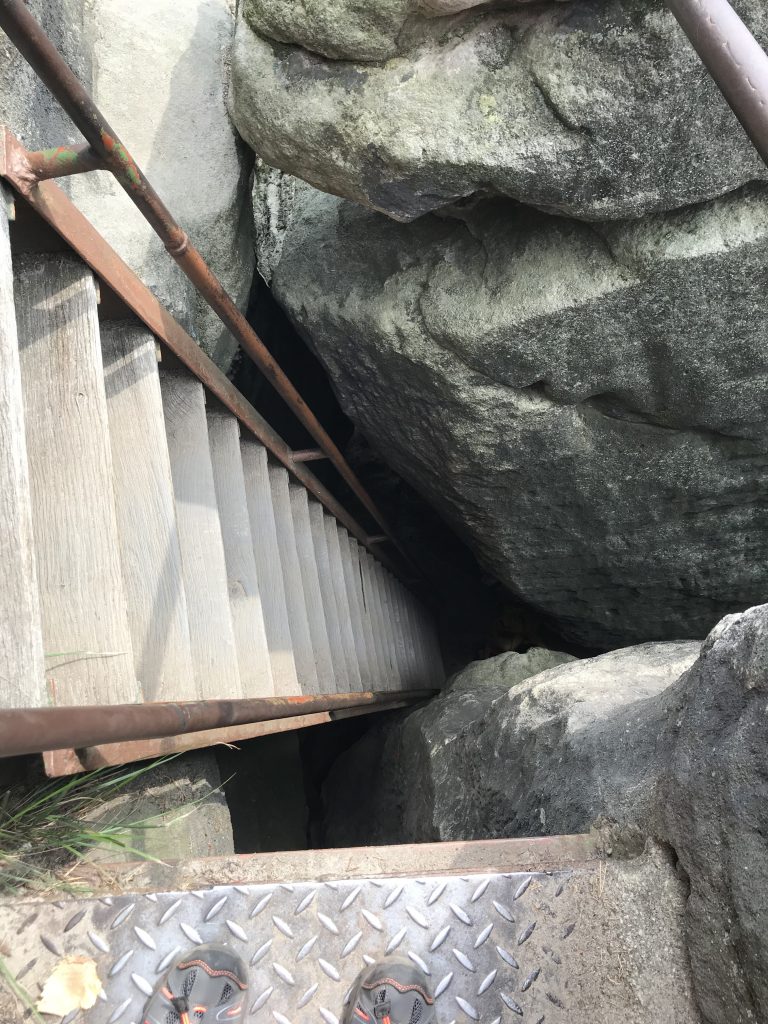
Výstup na Šaunštejn 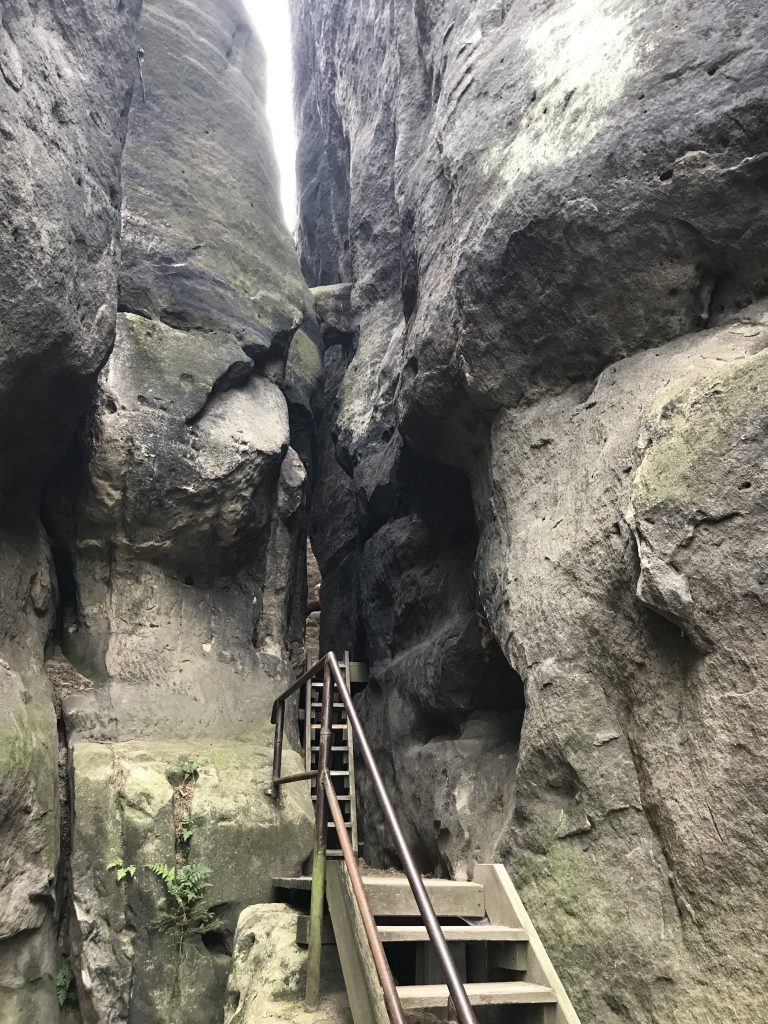
Výstup na Šaunštejn 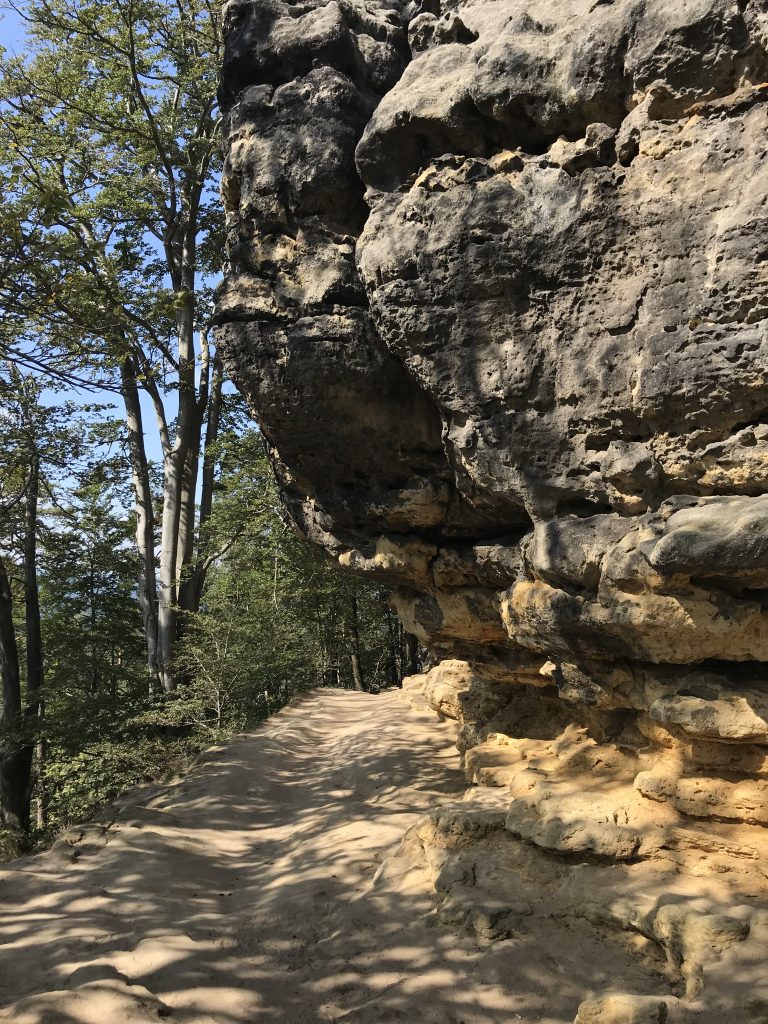
Proč chodit po červené
Děčín
Jelikož jsme skutečněBecause we are really near Děčín, it would be a shame not to see the castle here and especially the zoo, which is situated – also elsewhere – on top of a rock. Apparently, there is a rock elevator from below, but I don’t know anyone who can find it. However, guidebooks and leaflets have been luring you to it for decades.
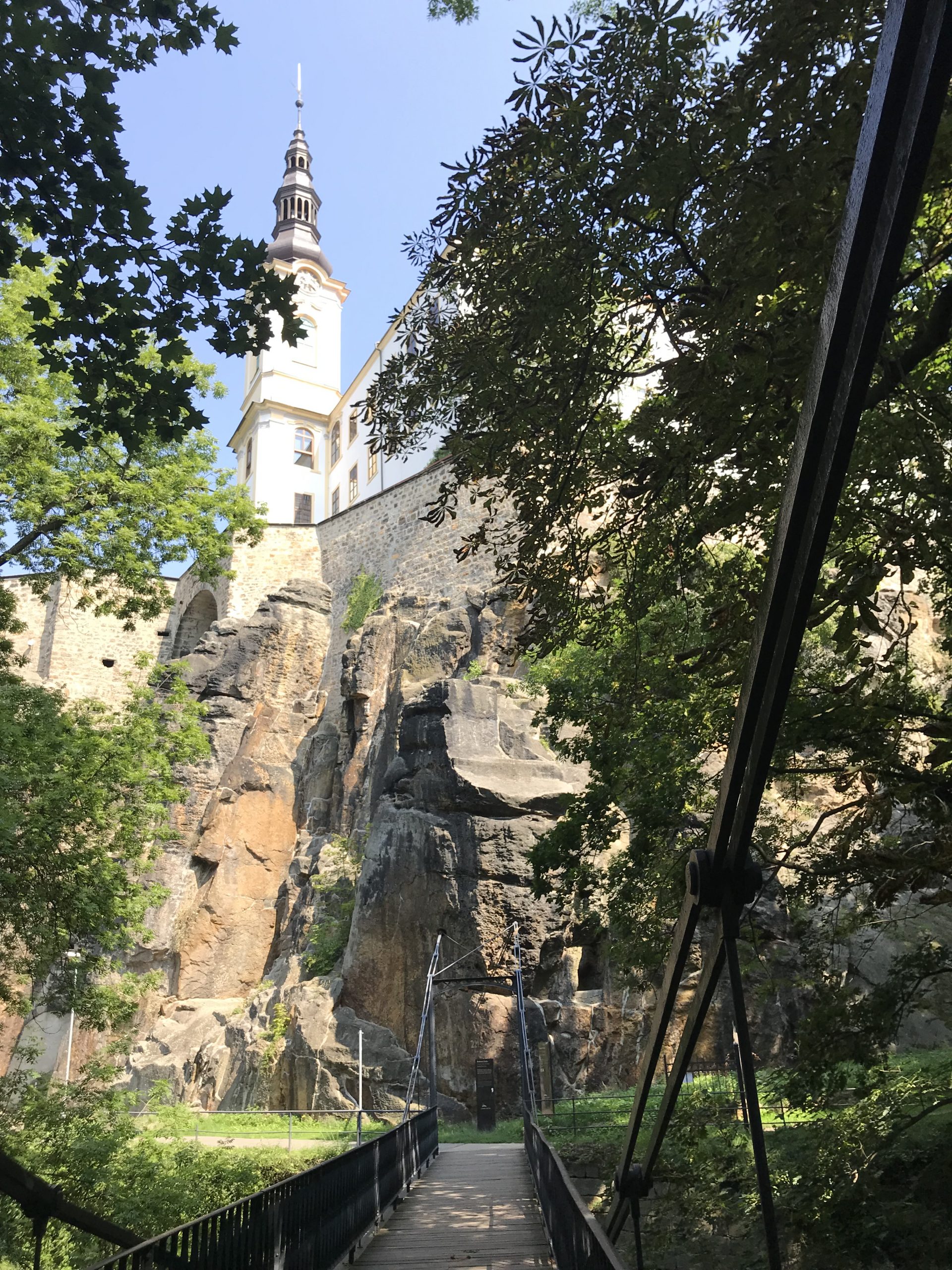
Part Two – Jetřichovice
The village where time stood still. The architecture here has distinctive features, the school, the office, all are in timbered houses with typical carved arches above the windows. The camp has a swimming pool, but it’s over the hill. There’s even a kettle and a shelter with seating, but the showers are a bit lame. The water is a bit cold, but unless you’re not very tall, the screen starts somewhere around your waist and ends below your neck. There’s another way to explain it: taller women have to choose – either throw away the shame or the cleanliness.
Jetřichovické vyhlídky (viewpoints) – a trip for the brave
The route is only 15 kilometres long and is deceptive on the map. The next kilometres are uphill. From Jetřichovice, we just climb and the moment we are out of breath, a turn appears that at first glance makes no sense. A signpost beckons us to Mariina vyhlídka (Maria’s viewpoint), but points into the rock. We climb the kilometer that the signpost promises on wooden footbridges and ladders, but it’s not just that. The planks are old, missing in places, there are large gaps between them, and through those gaps we can see into a chasm exactly as deep as we have climbed since morning. Finally, a beautiful gazebo balances on the top of the rock and those who can overcome their fear will truly enjoy the view.
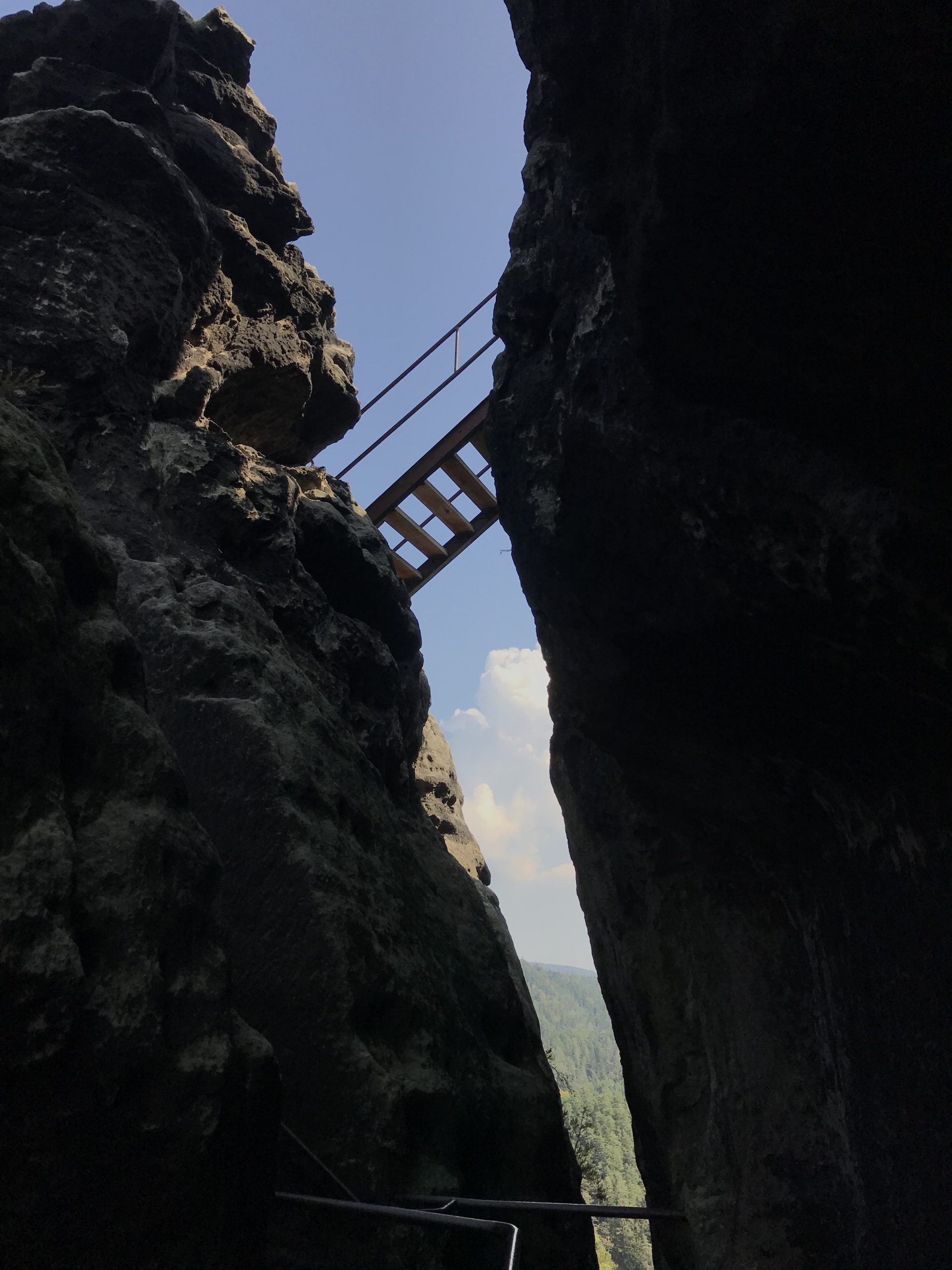
A kilometer back down the ladders and then on to Vilemína’s wall. It’s not so scary, it’s really just a wall, on the top we climb comfortably and can see how crazy we were to climb to the top of Maria’s rock (the highest and narrowest in the area).
The third viewpoint is also worthwhile. Already the signpost warns us that the climb to Rudolf’s Stone is difficult and frankly – Rudolf was probably a climber. The route consists of chains suspended from the rock and poles that are hammered into it. This would still be good, but the sandstone crumbles under our feet and small grains of sand slip. After a while, the ascent feels like a climb. And on the top? Oh, my goodness! Again, a gazebo holding on to the top – it’s some kind of local fashion.
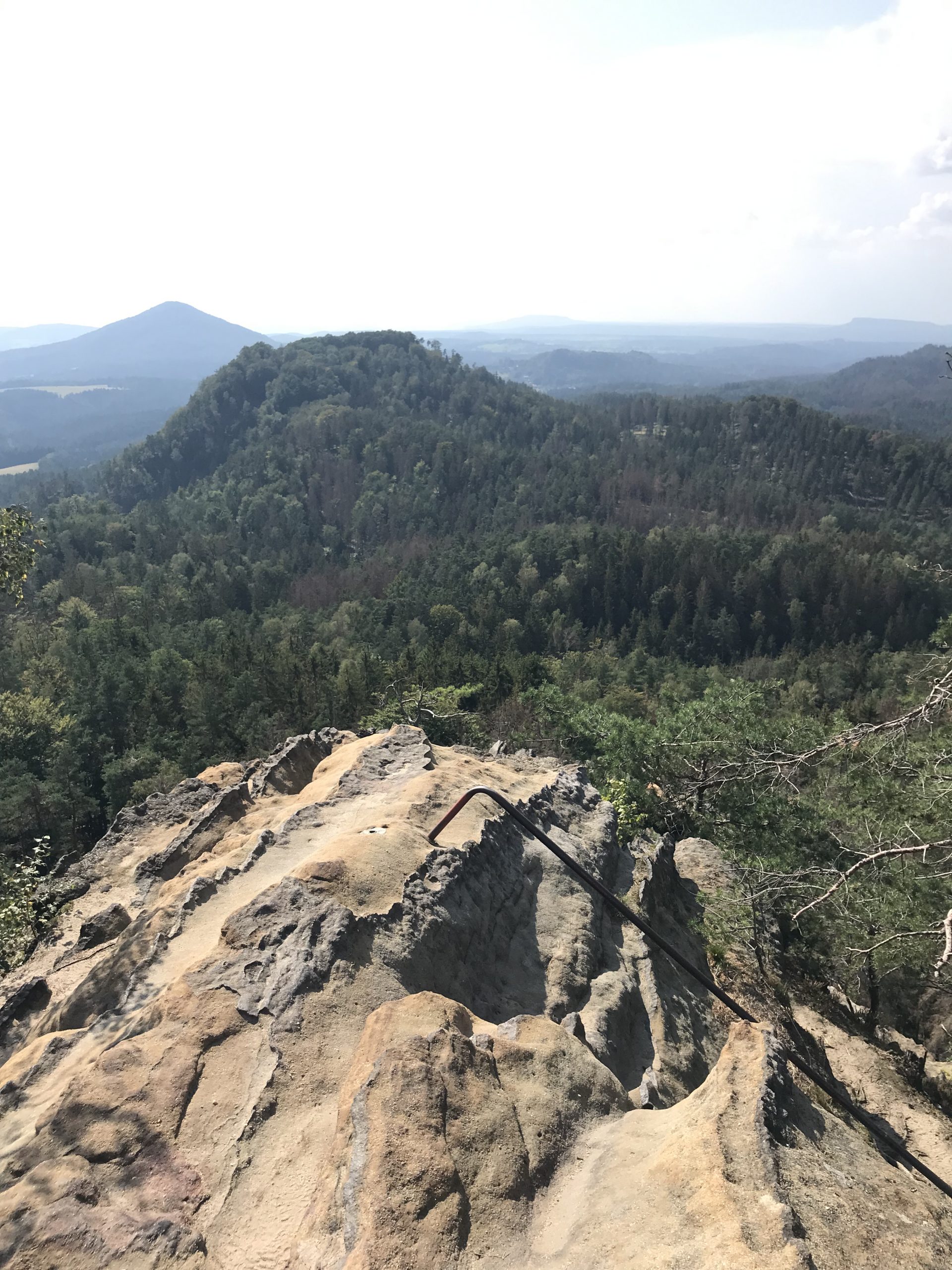
The last section of the trip is a descent (we’ve also been climbing until now). Along the way it will be possible to see the wooden troughs that were used to send logs down into the valley, from where they floated down the river to the sawmill.
Dolský mill
The place just near Jetřichovice became famous especially for the fairy tale Pyšná princezna (The Proud Princess). But it is a truly beautiful place. You can walk through the remains of the buildings or have a snack on the weir. The path continues over the other gully, the more adventurous one can go directly through the gully, but this is really only at your own risk. You will come to the camp from the other side, so you will miss Jetřichovice completely, but you`ll find yourself at a pond that belonged to another mill. You can also walk through a dry tunnel in the rock, which was used to supply water to the mill wheel. It is about 50 metres long and without a torch you can only grope and be led through walls covered with slimy lichen.

Dolský mlýn 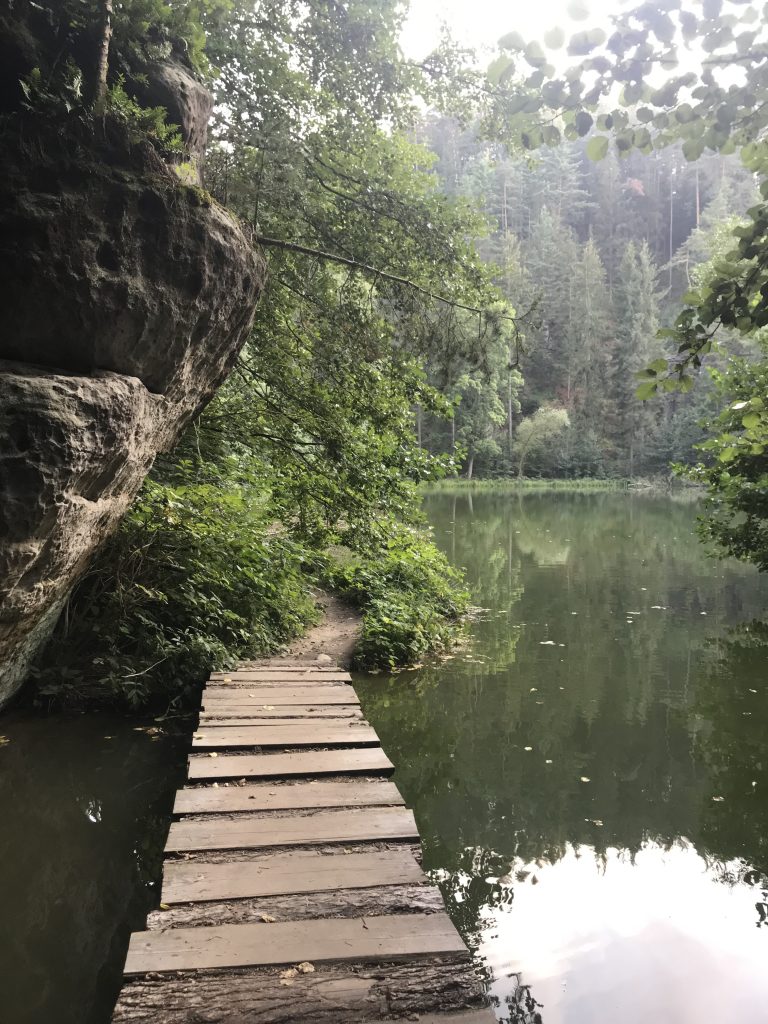
Bývalý mlýnský rybník
Poem at the end
There are many places worth visiting, but of course take a map and your own ideas, I just wanted to entice you. But perhaps I should mention the nearby village of Kyjov, where there is a rock trail of a poet who supposedly used to come here to seduce girls. I guess girls were different back then – all they needed was a good hike, climb a few rocks on ladders, be rewarded with a beautiful view and maybe listen to a poem or two…


